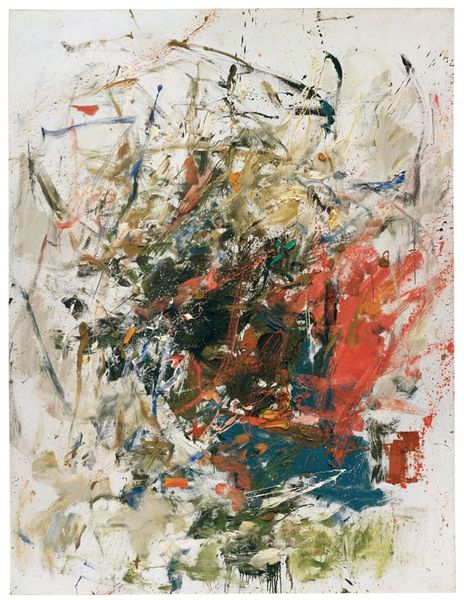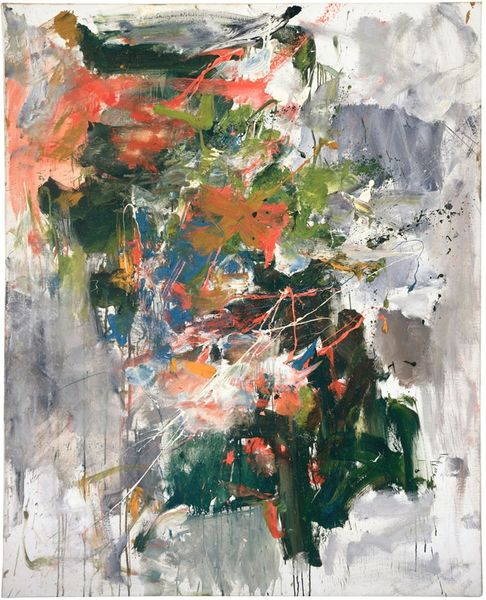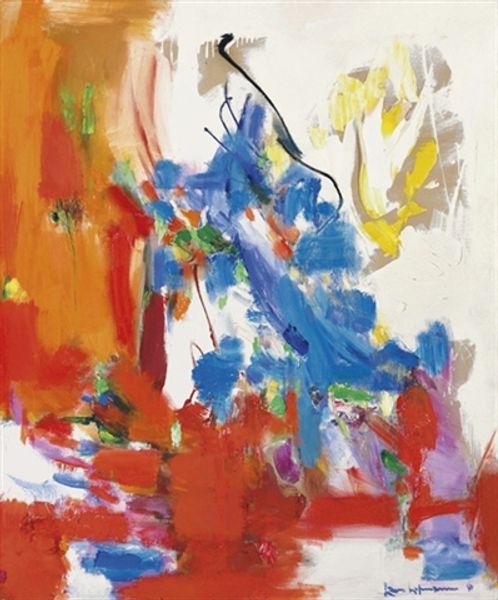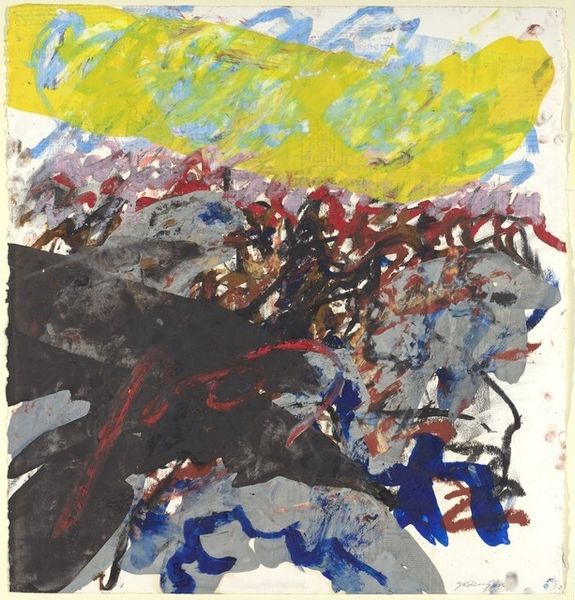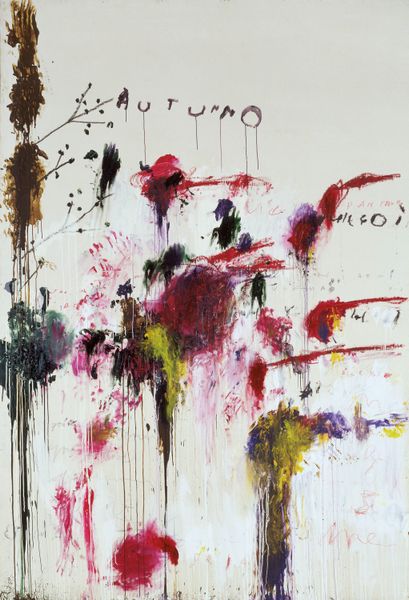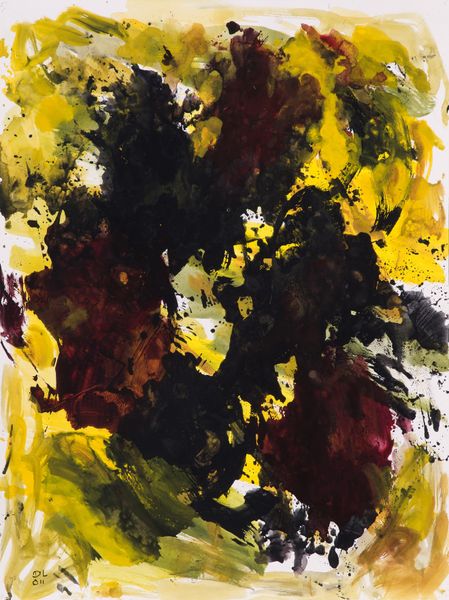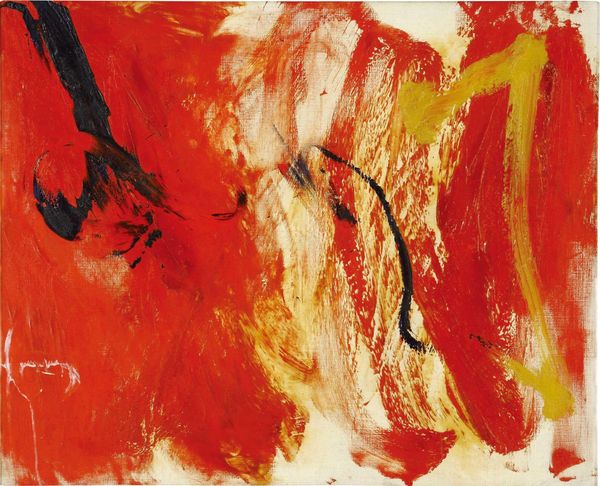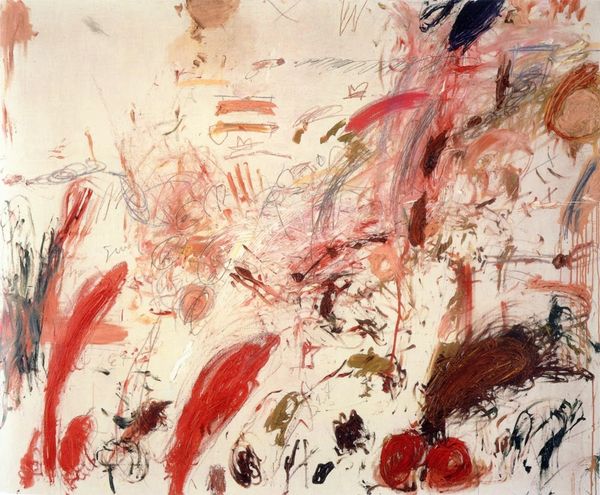
#
black-mountain-college
Copyright: Cy Twombly,Fair Use
Curator: Let's spend some time with Cy Twombly's "Nicola's Irises," an acrylic on canvas piece from 1990. Editor: Well, right off the bat, I'm struck by the rawness. It's less a depiction of irises and more an expressionistic outburst of color and gesture. Curator: Absolutely. Think about Twombly’s process. The visible strokes, the drips—it all points to an immediate, physical engagement with the materials. Acrylic paint lends itself to that kind of impulsive application. No precise oil paint blending or layering here. What statement is Twombly making by abandoning traditional notions of control? Editor: I’d argue that it speaks volumes about rejecting established artistic hierarchies. Twombly is moving beyond the limitations of a predominantly white, male art world and questioning what's deemed "high art." The "careless" mark-making challenges established techniques, subtly subverting that male-dominated legacy. Curator: I agree to some extent. He also blurs the boundaries between painting and writing; consider these as huge sweeping calligraphy, akin to action painting, reflecting his deep understanding of materiality as language. The use of commercial acrylic, a decidedly modern material, moves it away from elitist approaches of earlier traditions, yes? Editor: Absolutely. But the vibrant yet limited palette – predominantly reds, greens, and blacks – also hints at underlying tensions and potentially darker undertones. Curator: I see your point. There's a push-and-pull, a raw simplicity born from layering and action that I feel in line with post-war society grappling with tradition. How does the absence of detail further challenge or enhance the meaning for a modern audience versus historical patrons, maybe? Editor: In this moment of history, its refusal of neat narratives really resonated. We are invited to our own subjective engagement and maybe given space to build more inclusive, diverse and powerful understandings. I feel almost rebellious just looking at this! Curator: An invitation indeed! Well, regardless of interpretation, "Nicola's Irises" serves as a fantastic example of how unconventional techniques can open new avenues for expression, emphasizing material over form in truly innovative and lasting ways. Editor: It truly does. And for me, it reinforces the understanding that art isn't made in a vacuum, that choices about process, materials and presentation are inherently political and deserve ongoing re-examination in every generation.
Comments
No comments
Be the first to comment and join the conversation on the ultimate creative platform.

